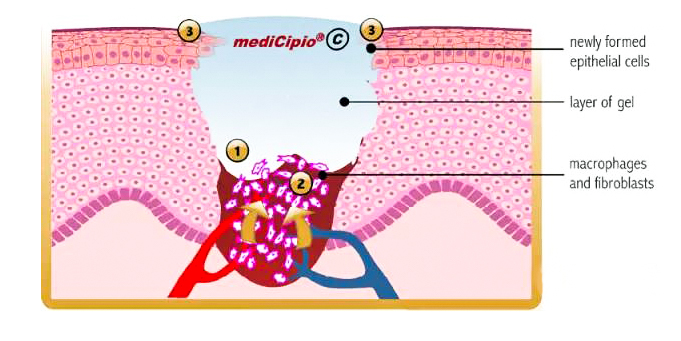Alginate dressings are now one of the most commonly used dressings in clinics, and venous leg ulcers are often used. Alginate dressing is a kind of contemporary wet dressing that has high absorption and hemostasis and can promote wound healing. The main component of alginate medical dressing is calcium alginate, natural cellulose extracted from seaweed. In minor and deep sinus wounds, it promotes wound drainage and pus drainage. It can effectively absorb excess wound exudate to form a soft mesh gel, maintaining an excellent moist environment and promoting wound repair and healing.
According to different functions, alginate dressings can be divided into surface and filling alginate dressings. The former is applied to the wound surface, while the latter is strip-shaped, suitable for hollow wounds. It has been widely used clinically in treating pressure ulcers, nursing anal fistulas, and nursing diabetic feet.
How do alginate dressings help wounds?
1. Promote wound healing
Compared with other wound dressing products, alginate dressings have relatively strong water absorption and can absorb a large amount of wound exudate to form a moist gel state, which is used to maintain good moisturization of damages and strengthen autolytic debridement. In this environment, epidermal cells can swim and increase freely, which also accelerates the growth rate of granulation and the rate of new epithelium.
2. It can reduce the pain and re-injury when the wound is changed. The moist environment created by the
alginate dressing on the damage can reduce the adhesion between the sauce and the wound and prevent the death and exposure of the nerve endings in the wound.
2. Help the wound stop bleeding
For the bleeding symptoms of the wound, after the alginate dressing is covered, the exudate exchanges with sodium ions and releases calcium ions on the wound surface at the same time, which can promote the formation of prothrombin activator, thereby accelerating the blood coagulation process.
3. Isolate external germs
After skin ulceration, germs quickly invade the inside of the wound. After covering the alginate dressing, it can effectively isolate external germs, prevent germs from invading the wound, maintain a moist, low-oxygen, slightly acid environment, promote the regeneration of epidermal cells, and enhance local sterilization ability. , reduce the incidence of infection.
4. Will does not stick to the wound
The alginate dressing has good affinity, can be easily removed after absorbing water, is not easy to adhere to the wound, and avoids secondary damage to the wound surface.
The alginate dressing produced by Longterm Medical is characterized by strong water absorption (water absorption rate ≥ 20) and good gelation; high-quality raw materials are selected, viscosity> 800cp, grayscale < 1.5D, fineness 1.5D, strength 1.5g /D, elongation at break > 10%; bacteriostatic rate > 80%, available for needle punched sheets and filling strips.
Alginate dressings have good absorption and compliance and have a wide range of applications. They can be used in treating various wounds, such as full-thickness or partial skin gaps containing slough and necrotic tissue with a lot of exudation, including infected wounds and wounds—injuries with sneak and sinus tract. The gel formed after absorbing exudate will create an excellent moist environment locally in the wound and promote wound autolytic debridement and the growth of granulation tissue. The formation of the gel depends on sufficient fluid, so alginate dressings cannot be used on wounds with slight exudation and wounds covered with crusts of necrotic tissue. Alginate dressings containing silver ions are both highly absorbent and anti-infective, making them ideal for infected wounds that exudate a lot, such as infected pressure ulcers that exudate a lot.
Precautions for the use of alginate:
1. If the wound is mainly caused by insufficient arterial blood supply or a diabetic foot ulcer, or an infected wound, the conditions of use are: it should be used under the guidance of medical staff, and the medical staff should frequently evaluate the clinical indications of the patient and check the wound. Happening.
2. Inappropriate situation of alginate dressing: In the case of massive and continuous bleeding that cannot be controlled by the body's physiological mechanism and must be stopped by surgical means, such as blood vessel rupture.
3. This product should not be used for dry wounds;
4. When the wound exudate is reduced, it is recommended to use other dressings with a small amount of exudate, such as Longtai hydrocolloid.
For more information on Innomed® dressings, refer to the previous articles. If you have customized needs, you are welcome to contact us; we will serve you wholeheartedly.
At Longterm Medical, we transform this data by innovating and developing products that make life easier for those who need loving care.
Editor: kiki Jia
Date:June29,2022

 English
English عربى
عربى Español
Español русский
русский 中文简体
中文简体








